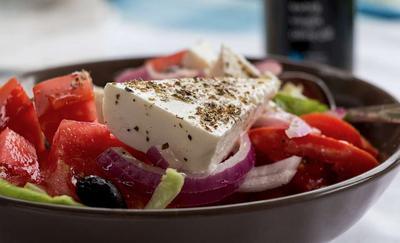Is it true that the nutritional value of dark vegetables is greater than that of light vegetables?
The nutritional value of vegetables can be distinguished only by the color of vegetables. it is well known that there are many kinds of vegetables that people often eat, but the colors of all kinds of vegetables are different, some are dark and some are light. Many people think that the nutritional value of vegetables has nothing to do with color, but the fact is that the nutritional value of dark vegetables is higher than that of light vegetables. Come and have a look.
All countries emphasize increasing the variety and quantity of vegetables.
Vegetables and fruits are important sources of vitamins, minerals, dietary fiber and phytochemicals. A diet rich in vegetables, fruits and potatoes plays an important role in maintaining good health, maintaining the normal function of the intestinal tract, improving immunity, and reducing the risk of chronic diseases such as obesity, diabetes, and high blood pressure. dietary guidelines in various countries emphasize increasing the type and quantity of vegetables and fruits. Both the healthy Dietary guidelines for Capital residents and the Dietary guidelines for Chinese residents 2007 recommend that Chinese adults eat 300g-500g of vegetables, preferably dark vegetables, and 200g-400g of fruits, and pay attention to increasing their intake of potatoes.
The nutrition of lettuce leaf, celery leaf and radish tassel is several times higher than that of stem and root.
Vegetables are an important source of micronutrient dietary fiber and natural antioxidants. Generally speaking, fresh vegetables contain 65% Mel 95% moisture, and most vegetables contain more than 90% water. Vegetables contain cellulose, hemicellulose, pectin, starch, carbohydrates and so on, most of which are low in energy and are a kind of low-energy food. Vegetables are also good sources of carotene, vitamin B1, vitamin C, folic acid, calcium, phosphorus, potassium and iron.
Tender stems, leaves and cauliflower vegetables such as cabbage, spinach and broccoli are good sources of carotene, vitamin C, vitamin B2, minerals and dietary fiber. Vitamin C is rich in leaves, flowers and stems where vegetable metabolism is exuberant. Parallel to the distribution of chlorophyll. Generally dark vegetables have higher contents of carotene, riboflavin and vitamin C than light-colored vegetables and contain more phytochemicals. In the same vegetable, the vitamin content of leaves is generally higher than that of roots, such as lettuce leaves, celery leaves, radish tastes several times higher than the corresponding stem roots. The nutritional value of leafy vegetables is generally higher than that of melons. The dietary fiber of root vegetables was lower than that of leafy vegetables. Cruciferous vegetables such as cabbage, cauliflower, cabbage, etc., contain phytochemicals such as aromatic isothiocyanates, which are the main anti-cancer components. Bacteria and algae, such as mushrooms, mushrooms, fungus, yeast and porphyra, contain minerals such as protein, polysaccharides, carotene, iron, zinc and selenium, and are also rich in iodine in marine bacteria and algae such as porphyra and kelp.
Dark vegetables: perfect combination of color, aroma, taste and nourishment
Dark vegetables refer to dark green, red, orange and fuchsia vegetables, which are rich in carrots, especially β-carotene, and are the main source of vitamin A for Chinese residents. In addition, dark vegetables also contain a variety of other pigment substances, such as chlorophyll, lutein, lycopene, anthocyanin and so on, as well as aromatic substances, which give vegetables special color, flavor and aroma, which can promote appetite and show some special physiological activities.
Common dark green vegetables: spinach, rape, winter cold vegetables, celery leaves, water spinach (water spinach), lettuce leaves, mustard, broccoli, watercress, shallot, chrysanthemum, leek, radish tassel and so on.
Common red and orange vegetables: tomatoes, carrots, pumpkins, red peppers and so on.
Common purplish red vegetables: red amaranth, purple cabbage, cabbage and so on.
- Prev

What vegetables do you eat with diarrhea? four kinds of vegetables are suitable for patients with diarrhea!
Diarrhea is a common symptom. Diarrhea is mainly caused by gastrointestinal discomfort, and there are many ways to treat diarrhea.
- Next

Choose these 10 kinds of vegetables to make Vegetables Salad is nutritious and healthy!
When you put vegetables on a salad, the order in which you put them may affect the nutritional value of the vegetables themselves. So, you will put fried bread, bacon or its.
Related
- Where is it suitable to grow horseradish in China? it is expected to see the middle altitude horseradish in Alishan.
- How to prevent tomato virus disease reasonably? (Control methods included)
- Many people like to plant towel gourd on the balcony. What are the main points of this method and management?
- What crops can chili peppers be mixed with?
- Fertilization techniques and matters needing attention in Tomato
- What are the grafting techniques for peach seedlings in spring?
- Harm and control methods of root swelling disease of Chinese cabbage
- What are the pests of sweet potatoes? How to prevent and cure it?
- Symptoms, causes and Control methods of navel Rot in Tomato
- The cause of "Cucumber rotten bibcock" in Farmers' planting Cucumber and its Control Plan

